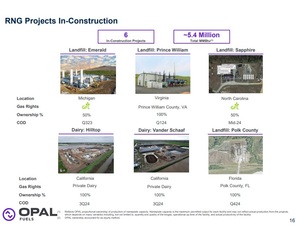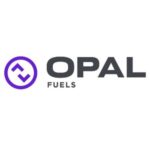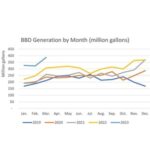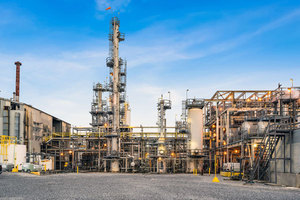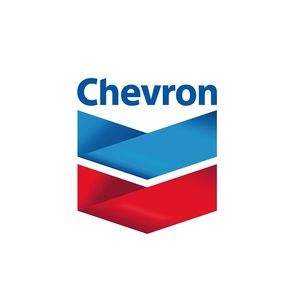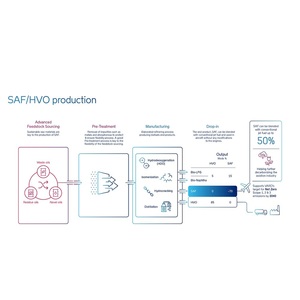Opal Fuels reports 20% increase in RNG production for Q2
Energy Disrupter
ADVERTISEMENT
Opal Fuels Inc. released second quarter financial results on Aug. 9, reporting renewable natural gas (RNG) production was up 20 percent when compared to the same period of last year. RNG sold as transportation fuel was up 53 percent.
Opal Fuels produced 600,000 MMBtu of RNG during the second quarter, 20 percent when compared to the same quarter of last year, and 1.2 million MMBtu of RNG during the first half of the year, up 34 percent when compared to the same period of 2022. RNG sold as transportation fuel was at 11 million gasoline gallon equivalent (GGE) for the second quarter of 2023 and at 19.3 million for the first half of the year, up 53 percent and 45 percent, respectively, when compared to the same periods of 2022.
During a second quarter earnings call held Aug. 10, officials at Opal Fuels discussed operations at the company’s seven operational RNG projects and provided an update on an additional six RNG projects that are currently under construction. An additional 18 projects are in Opal’s advanced development pipeline.
Johnathan Maurer, co-CEO of Opal, said the company’s seven operational RNG projects have a combined nameplate capacity of approximately 3.9 million MMBtu annually. The Noble Road project in Shiloh, Ohio; the New River project in Raiford, Florida; and the Pine Bend project in Inver Grove Heights, Minnesota, are the three newest landfill gas-to-RNG projects that Opal has brought online. Gas production at those projects continues to increase as the landfill trash increases and the company’s gas collection team works hand-in-hand with its landfill partners to improve gas quantity and quality, Maurer said.
The six RNG projects currently under construction represent an additional 5.4 million MMBtu of annual nameplate capacity, Maurer continued. Construction was completed on the Michigan-based Emerald RNG project in June, with commissioning expected to be complete during the third quarter. Construction also began in June on Opal’s Polk County RNG project in Florida. That 1.1 million MMBtu project is expected to begin operations during the fourth quarter of next year.
Maurer noted that Opal has experienced some delays in the development of its Emerald, Prince William and Sapphire RNG projects due in large part to the permitting process. The Prince William project is now expected to be online during the first quarter of next year, while the Sapphire project is expected to be online during the first half of 2024. Two dairy RNG projects under development in California are expected to be commissioned during the third quarter of 2024, he added.
According to Maurer, the 18 additional RNG projects currently in Opal’s advanced development pipeline represent an additional 8.1 million MMBtu of nameplate capacity. The majority of those projects are landfill gas-to-RNG projects, but the pipeline also includes dairy and food waste projects, he said. Projects in Opal’s advanced development pipeline are those that the company reasonability expects to be under construction within the next 12 to 18 months.
In addition to its RNG projects, Opal also has a renewable power segment with 17 electric projects with a combined 112.5 megawatts (MW) of nameplate capacity.
Opal reported revenues of $43 million for the second quarter, down 12 percent when compared to the same period of last year. Net loss was $7.3 million, compared to $4.5 million. Basic and diluted loss per share attributable to Class A common shareholders was 6 cents. Adjusted EBITDA for the quarter was $8.7 million, up 112 percent when compared to the same period of 2022.

